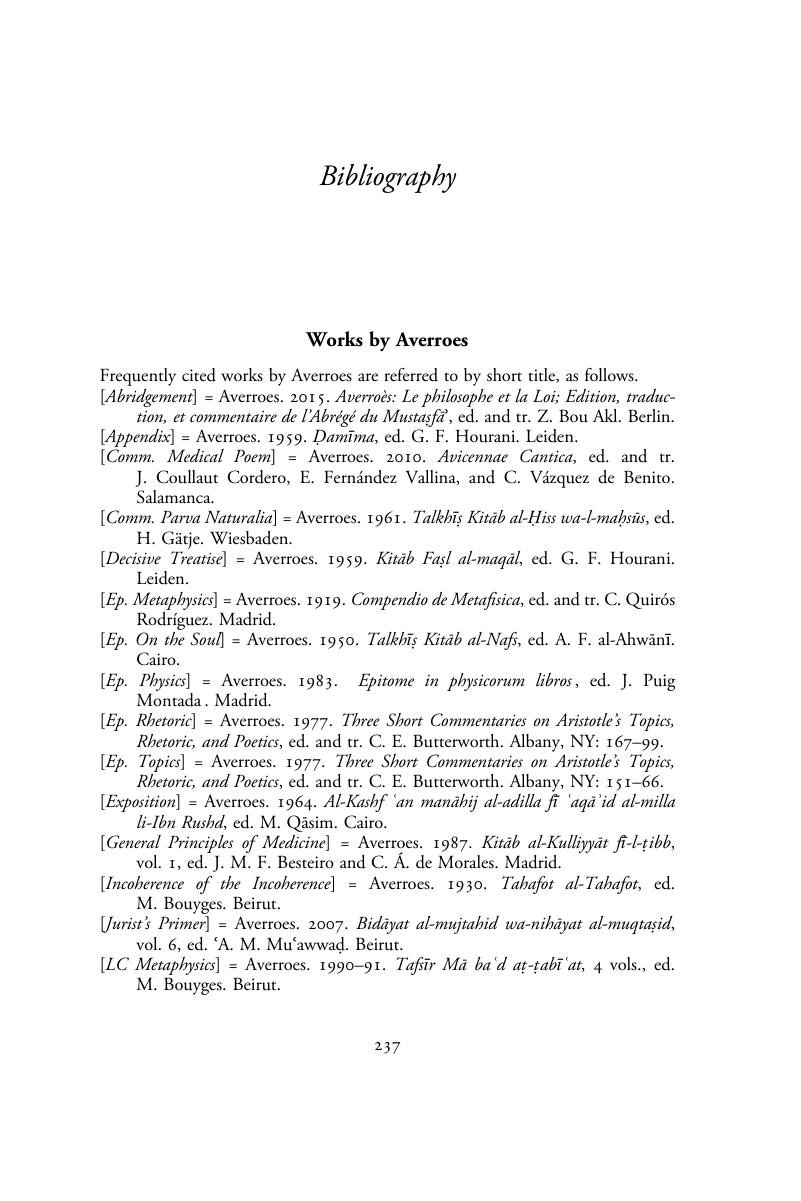Book contents
- Interpreting Averroes
- Interpreting Averroes
- Copyright page
- Contents
- Figures
- Tables
- Contributors
- Introduction*
- Chapter 1 Averroes, Philosopher of Islam*
- Chapter 2 Dogmatics, Theology, and Philosophy in Averroes*
- Chapter 3 Averroes on Juridical Reasoning*
- Chapter 4 Averroes’ Corrective Philosophy of Law*
- Chapter 5 Averroes’ Logic*
- Chapter 6 Constructing Averroes’ Epistemology*
- Chapter 7 Averroes on Knowing Essences
- Chapter 8 Averroes and the “Internal Senses”*
- Chapter 9 Averroes on Medicine
- Chapter 10 Averroes’ Natural Philosophy as Science of Nature*
- Chapter 11 Averroes on Divine Causation*
- Chapter 12 Averroes’ Goals in the Paraphrase (Middle Commentary) of Aristotle’s Nicomachean Ethics
- Bibliography
- Index
- References
Bibliography
Published online by Cambridge University Press: 23 November 2018
- Interpreting Averroes
- Interpreting Averroes
- Copyright page
- Contents
- Figures
- Tables
- Contributors
- Introduction*
- Chapter 1 Averroes, Philosopher of Islam*
- Chapter 2 Dogmatics, Theology, and Philosophy in Averroes*
- Chapter 3 Averroes on Juridical Reasoning*
- Chapter 4 Averroes’ Corrective Philosophy of Law*
- Chapter 5 Averroes’ Logic*
- Chapter 6 Constructing Averroes’ Epistemology*
- Chapter 7 Averroes on Knowing Essences
- Chapter 8 Averroes and the “Internal Senses”*
- Chapter 9 Averroes on Medicine
- Chapter 10 Averroes’ Natural Philosophy as Science of Nature*
- Chapter 11 Averroes on Divine Causation*
- Chapter 12 Averroes’ Goals in the Paraphrase (Middle Commentary) of Aristotle’s Nicomachean Ethics
- Bibliography
- Index
- References
Summary

Information
- Type
- Chapter
- Information
- Interpreting AverroesCritical Essays, pp. 237 - 257Publisher: Cambridge University PressPrint publication year: 2018
